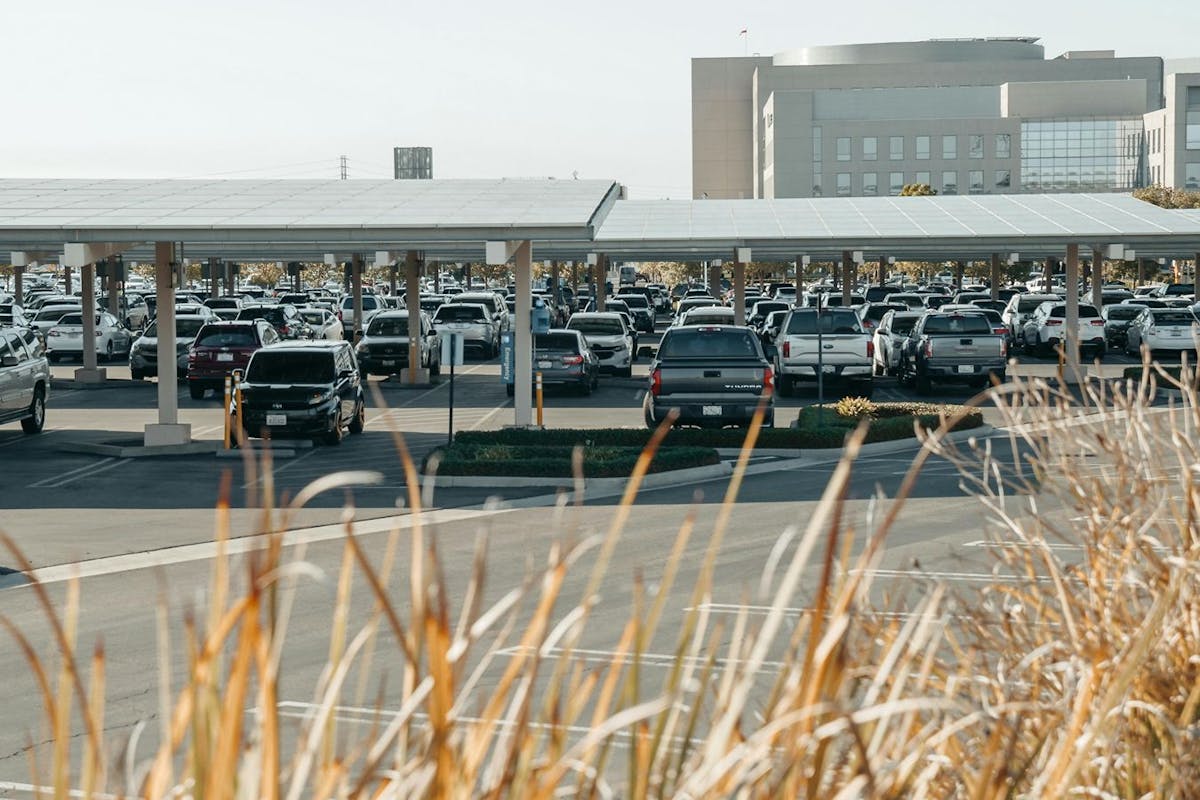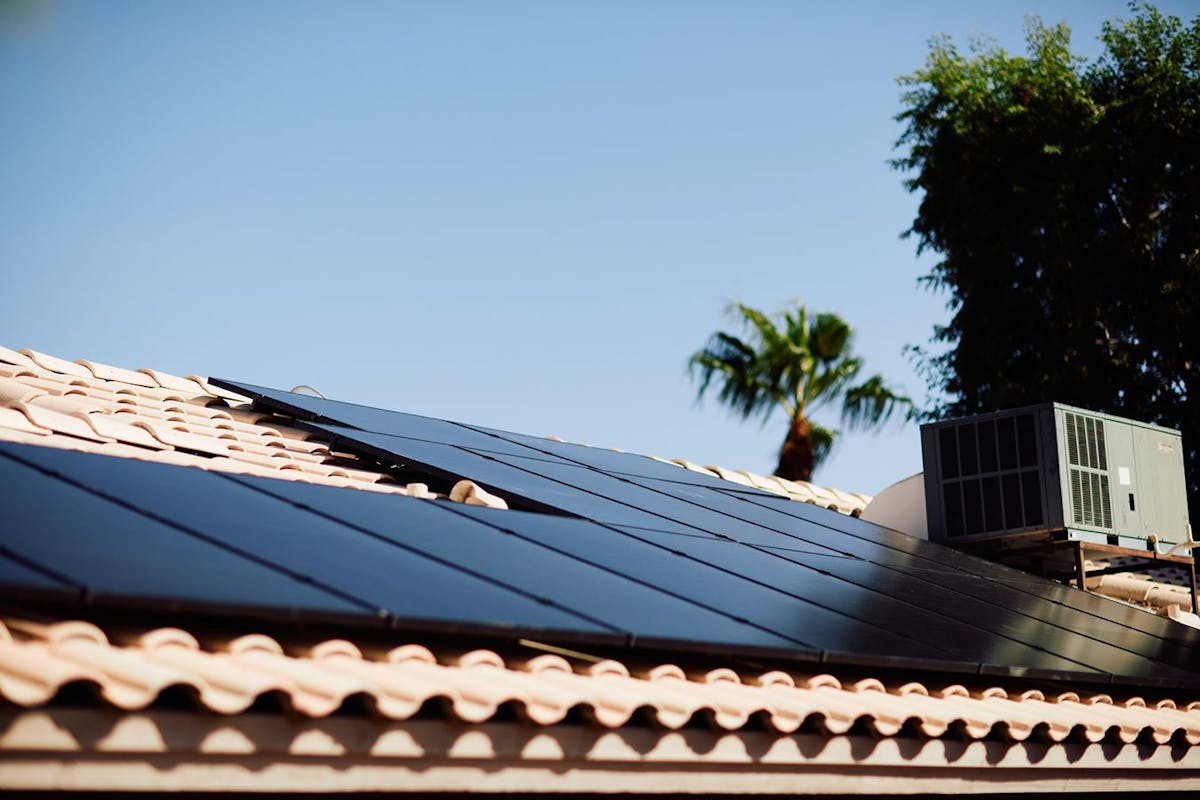Building Integrated Photovoltaics (BIPV): Are They a Good Idea?
Last edited

Author
Andrew Giermak
Solar and Electrification Writer and Editor

Editor
Andrew Blok
Electrification and Solar Writer and Editor

Building integrated photovoltaics, or BIPVs, are building materials that also generate solar electricity. It’s a growing technology and more products, such as solar shingles, tiles, canopies, bricks, siding, sunlights, and windows, are available. What products are ready for your home? That can be a tricky question, with answers changing pretty quickly.
We’ll go through what BIPVs are already out on the market, what’s probably soon to be available, and what clean-energy products are worth considering.
See how much you can save by going solar with Palmetto
What Are Building Integrated Photovoltaics, or BIPV?
BIPV is any integrated building material or feature (i.e. the roof tiles, siding, or windows) that also generates photovoltaic solar electricity.
Producing solar power and serving a functional building purpose (i.e. protecting the property, letting light in, or providing insulation), BIPVs are classified as dual-use photovoltaic (PV) technologies.
With many different BIPV products available now and in the future, the technology has great potential to redefine sustainable building practices and clean energy production for residential homes, small businesses, towering skyscrapers, sports stadiums, and everything in between.
Popular BIPV Products
BIPVs are helping homeowners, businesses, and communities meet green, renewable energy and sustainable building goals all over the world. While there are plenty of technologies still in development, here are a few of the most prominent BIPV products available today or in the near future:
Solar shingles
Solar shingles (also known as solar roofing or solar roof tiles) are the most widely-known building integrated solar product in use today. Solar roofing is generally seen as an alternative to traditional solar panels, able to generate electricity and function as a roof shingle or tile at the same time.
Some companies have brought their solar roofing products to the market.
Solar shingle companies:
Solar windows and skylights
Solar windows and solar skylights appear and operate as ordinary windows, while simultaneously generating emission-free electricity.
Although many labs and manufacturers are exploring the space, commercially available solar windows and skylights are tough to find by an average consumer in 2025. With that said, there are three primary types of solar window/skylight technologies in use and development today.
First, photovoltaic glass utilizes transparent solar cells to generate electricity in a way that is completely undetected by the untrained eye.
Second, other “solar windows” may be lined with tiny solar cells around their frame, which harness the light captured and dispersed by the product’s special glass pane.
Third, some semi-transparent films or treatments can be applied to ordinary glass surfaces to transform them into “solar windows” or “solar skylights.”
With any type of current or future solar window technology, the goal and results are always going to be the same: to let light in while also creating solar electricity.
Solar window and skylight companies:
Solar canopies and carports
Conversely, solar canopies, also known as solar awnings, essentially perform the opposite function of solar windows. While they both are used to generate solar electricity, solar canopies block sunlight out, whether that is on your porch, driveway, or raised above a large commercial parking lot.
Solar canopies are primarily used as solar carports to shade vehicles parked in shopping centers, airports, business campuses, and more. When integrated with electric vehicle chargers, solar canopies can be used to power EVs with solar energy.
With options for building integration and standalone installations, solar canopies and solar carports may be constructed in a variety of ways. While there are some prefabricated solar carport and solar canopy suppliers out there, these dual-function installations can also be created using traditional solar panels.
Solar siding, bricks, facades, and more
BIPV technology is advancing in many different directions with interesting products launching year after year. While there is always something new to explore, sustainable builders may now begin to think about incorporating solar-powered technology into their siding, bricks, facades, and practically every other building feature exposed to direct sunlight.
Solar siding, bricks, and facades are more available for new construction and commercial-scale projects now, but could become more widespread as they grow.
See how much you can save by going solar with Palmetto
Pros and Cons of BIPV
While most people would like to save money by going green, BIPVs face challenges stunting their widespread adoption, such as limited availability, high upfront investment costs, and uncertainty for project design, permitting, and performance.
For a detailed analysis of BIPV’s benefits, pros, and cons, you may find this resource from the Department of Energy to be helpful. In short, here is a quick look at the main opportunities and challenges building integrated solar technologies face today.
| Opportunities | Challenges |
|---|---|
| Dual-purpose building features | Early stages of technology development |
| Lower property power costs | High investment costs |
| Emission-free electricity onsite | Design and permitting uncertainty |
| Qualification for green building incentives and sustainable construction certifications | Specialized maintenance required |
| Significant ROI for large buildings | Out of reach for most residential installations |
The Future of Building Integrated Photovoltaics (BIPV)
In summary, building integrated photovoltaics are an important green energy technology with the potential to redefine sustainable building practices.
Although many BIPV products are not yet available to average consumers, technologies like solar windows, solar shingles, and solar siding make it easy to envision a future with energy-efficient buildings that harness the sun and power our world.
The best option for most homeowners today is rooftop solar panels. Get a free solar savings estimate today and see what you could save with a more energy-efficient home with our Savings Maximizer.
See what solar can do for you:
Frequently Asked Questions
Are solar shingles a good option for my home?
Solar shingles are an interesting and growing option for homeowners who want the aesthetics of shingles without panels, or need to replace their roof anyway and want solar power. Challenges with solar shingles can include cost, availability, and efficiency compared to home solar panels.
Are solar panels or solar shingles better?
In most cases solar panels are a better option than shingles in cost, efficiency, energy production, availability, and dependability.
What are building integrated photovoltaics?
BIPVs, or dual-use PV technology, are any building materials or structures that also generate solar electricity.
Are solar shingles worth it?
Solar shingles can be worth it in instances where you’re in need of replacing a roof anyway and want the dual-purpose technology. Other potential benefits include incentives, aesthetics, and use where solar panels aren’t allowed. In most residential cases, solar panels are more cost-effective and efficient than solar shingles.
What’s the difference between BIPV and BAPV?
Building applied photovoltaics are products put or installed onto a building’s exterior, such as solar panels. BIPV products or materials are integrated into the building material itself.


